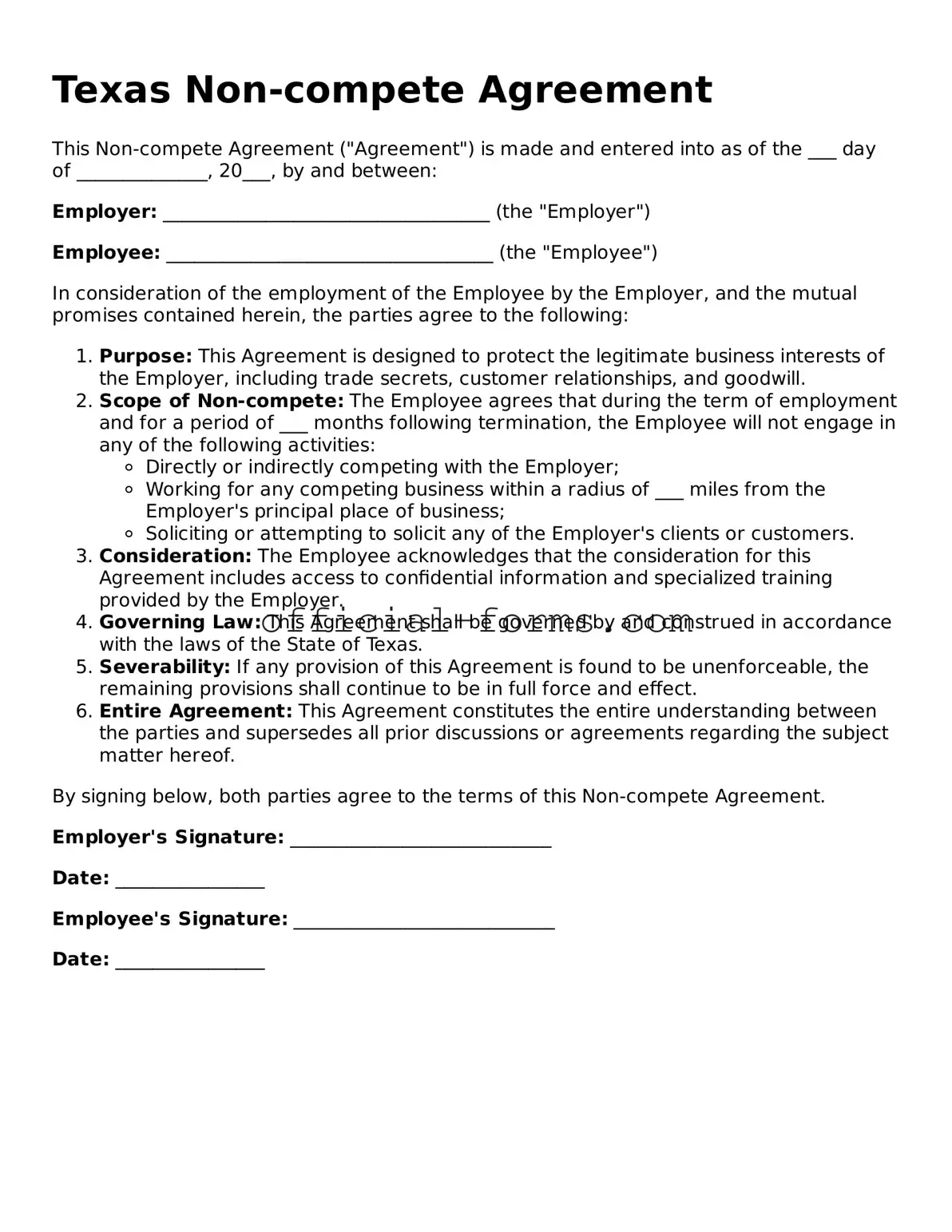Filling out a Texas Non-compete Agreement form can be a straightforward process, but mistakes can lead to complications down the road. One common error is failing to specify the geographic area covered by the agreement. Without a clear definition, the enforceability of the agreement may be challenged. Make sure to outline the specific locations where the non-compete applies.
Another frequent mistake is not clearly defining the scope of restricted activities. It is crucial to detail what actions are prohibited. Vague language can render the agreement unenforceable. Be precise about what constitutes competition to avoid confusion later.
People often overlook the duration of the non-compete clause. Texas courts generally favor reasonable time limits. If the duration is too long, it may be deemed excessive and unenforceable. Aim for a timeframe that protects business interests without unduly restricting the individual’s ability to work.
Additionally, individuals sometimes forget to consider the consideration given in exchange for signing the agreement. In Texas, a non-compete must be supported by some form of compensation or benefit. Failing to include this can invalidate the agreement. Ensure that both parties understand what is being exchanged.
Many also neglect to review the agreement with legal counsel before signing. This oversight can lead to misunderstandings about rights and obligations. Consulting a lawyer can clarify any confusing terms and help avoid pitfalls.
Another mistake is assuming that a non-compete agreement is automatically enforceable. While Texas law does allow for non-compete agreements, they must meet specific criteria to be valid. Always verify that the agreement aligns with state laws to avoid future issues.
Lastly, individuals sometimes sign the agreement without fully understanding its implications. It is essential to read and comprehend every clause before signing. Ignorance of the terms can lead to unintentional violations and legal consequences.
